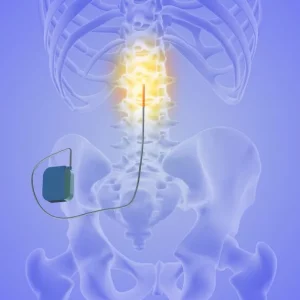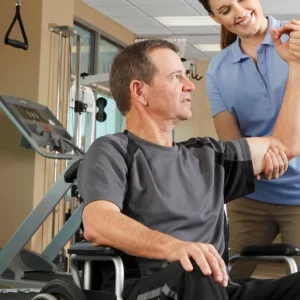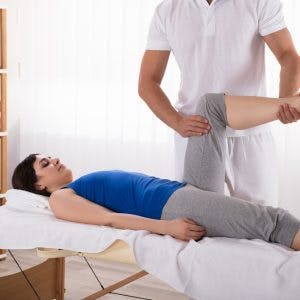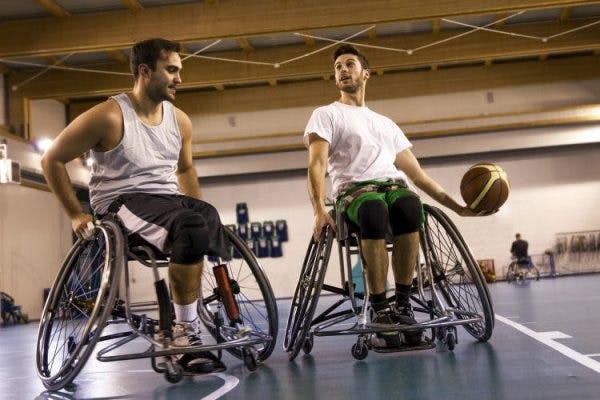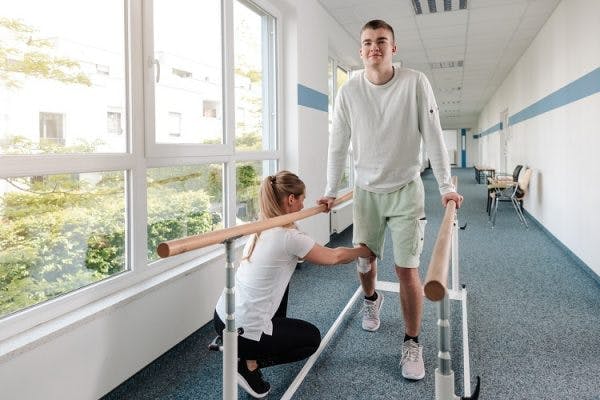Exoskeletons present a hopeful future for individuals with paraplegia (paralysis of the legs).
A spinal cord injury disrupts communication between the brain and body, leading to paralysis or weakness below the level of injury. As a result, many SCI patients may lose the ability to walk.
By using an exoskeleton, even individuals with very severe paraplegia may be able to get on their feet again and improve their independence.
To help you determine if an exoskeleton is worth investing in, this article will go over its pros and cons.
How Do Exoskeletons for Paraplegics Work?
Exoskeletons are a wearable technology that wraps around the trunk and legs to help individuals with paraplegia walk again.
The use of exoskeletons is typically recommended for individuals with a T3 level of spinal cord injury or below. Starting at the T3 level of injury, sensation and movement of the arms and hands will not be affected. Normal upper limb functions are necessary because individuals will need to use crutches for balance while operating an exoskeleton.
To operate an exoskeleton, individuals must shift their weight in the direction they want to move. The sensors in the exoskeleton will then facilitate movement of the legs.
SCI patients can use exoskeletons to perform functions like sitting, standing, climbing stairs, and walking.
Need to see it to believe it? Check out this TEDTalk to see how exoskeleton technology has allowed SCI survivor Amanda to walk again.
In the following section, we’ll discuss the setbacks of exoskeletons for paraplegia recovery.
Disadvantages of Exoskeletons for Paraplegia
Exoskeletons are an innovative solution for lower extremity paralysis; however, some shortcomings may deter individuals with paraplegia from getting one.
Below, we’ll discuss 4 major considerations against exoskeletons for paraplegics.
1. High Costs
Perhaps the greatest obstacle preventing individuals with paraplegia from getting an exoskeleton is its steep price.
These devices start at a minimum of $40,000 and can get exponentially more costly.
Additionally, individuals must learn how to operate the exoskeleton and the costs associated with working with a trained clinician must be factored in. Generally, individuals require an average of 10-15 sessions to learn how to walk independently with an exoskeleton.
2. Considered a Luxury, Not a Necessity
While some insurance companies may cover the cost for individuals with paraplegia to get an exoskeleton, it’s not exactly common practice.
Because many people can get by using an assistive device like a walker or wheelchair, many policymakers consider exoskeletons more of a luxury than a necessity.
3. Exclusive Physical Requirements
Not all spinal cord injury patients with paraplegia will be physically able to wear an exoskeleton.
Strength, height, and weight requirements will exclude many from using an exoskeleton.
For example, to use the ReWalk, spinal cord injury patients must:
- have normal upper extremity functions to use crutches
- be between 5’3″-6’2″
- weigh less than 220 lbs
- have healthy bone density to bear weight on the legs
While physical requirements can help motivate SCI patients to watch their diets and exercise more, other factors like height are impossible to change.
4. May Slow Down Progress
Another potential problem is that users can become overly dependent on exoskeletons for mobility.
Typically, rehabilitation from spinal cord injury involves continuous practice of weakened movements to stimulate neuroplasticity. Neuroplasticity is the spinal cord’s ability to make adaptive changes and rewire itself.
Traditional gait training techniques like aquatic therapy and the use of weight-bearing equipment relieve joint pressure and help you stay balanced, but they still require you to make walking movements on your own.
In contrast, exoskeleton users may get accustomed to leaning forward and letting the technology do the rest. Instead of exerting the effort to practice walking motions, users can develop a dependence on the exoskeleton for mobility.
As a result, individuals who have the potential to rehabilitate walking functions may not be putting in the work they need to do so.
With this in mind, exoskeletons may be a better option for individuals with complete spinal cord injuries because of their limited recovery outlook.
Now that you understand the disadvantages of exoskeletons for paraplegics, let’s discuss their benefits.
Benefits of Exoskeletons for Paraplegia
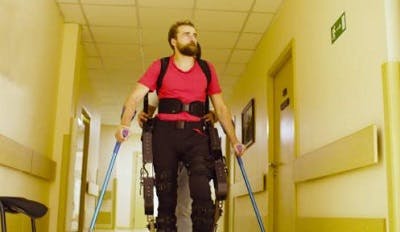
Exoskeletons can be a revolutionary way to get paraplegics with limited motor control back on their feet again.
Depending on the severity of one’s spinal cord injury, independent walking may not always be possible. In the following sections, we’ll discuss 4 majors benefits of using an exoskeleton to walk again.
1. Does Not Require Surgery
Unlike other promising treatments for paraplegic recovery, exoskeletons do not require invasive procedures.
For example, epidural stimulation involves implanting a device near the spine and stem cell transplants require spinal cord injections.
In contrast, exoskeletons are designed to be worn over the clothes, which makes it a low-risk way to improve mobility.
2. Improves Circulation
Lack of movement following a spinal cord injury can cause blood to pool in the legs. Not only will this reduce the amount of blood circulating back to the heart, but also contribute to swelling in the legs.
Using an exoskeleton will allow spinal cord injury patients to increase their mobility and move otherwise paralyzed areas of their bodies.
This will help improve circulation, which is essential for ensuring that blood is efficiently delivered throughout the body and fueling cellular activity.
3. Reduces Muscle Atrophy
Everyday movements and weight-bearing are essential to keep the bones and muscles strong.
Following a spinal cord injury, individuals may not be able to move around as much due to paralysis or weakness. As a result, their muscles will start to shrink to conserve energy.
While an exoskeleton won’t necessarily activate muscle contractions, it can help maintain bone and muscle density by keeping people on their feet, bearing weight, and moving around.
4. Boosts Confidence
An invaluable benefit of exoskeletons for paraplegia is restored hope. Exoskeletons provide SCI patients who’ve been told that they’ll never walk again the opportunity to walk.
This not only enables them to become more independent but also so much more confident in their day-to-day lives.
Unfortunately, damage to the spinal cord can’t heal itself as easily as the rest of the body. This is why the recovery outlook for complete spinal cord injury patients is significantly lower than for those with incomplete injuries.
Exoskeletons can help complete SCI patients recover more mobility than they ever thought possible by compensating for limited mobility.
Are Exoskeletons for Paraplegics Worth It?
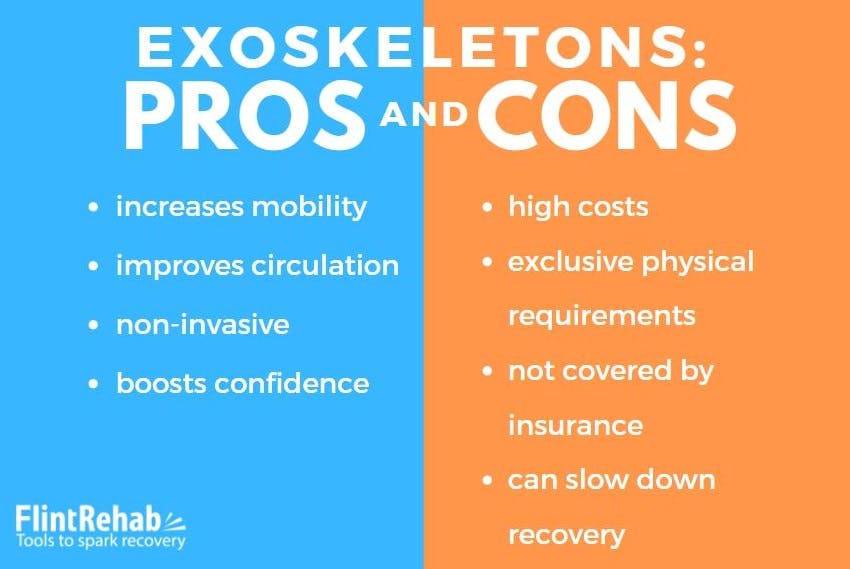
Every individual with paraplegia wants to walk again, and exoskeletons are expanding the opportunity to do so.
Unfortunately, it’s not always possible to regain motor functions after a severe spinal cord injury. However, innovative technologies like exoskeletons are creating new ways to walk again despite having paralysis.
Now that you know what the pros and cons of exoskeletons for paraplegia are, do you think they’re worth the investment?
Featured photo: iStock/chudakov2

